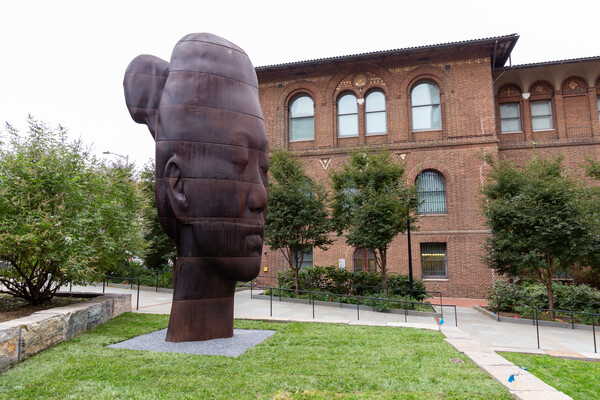
(From left) Doctoral student Hannah Yamagata, research assistant professor Kushol Gupta, and postdoctoral fellow Marshall Padilla holding 3D-printed models of nanoparticles.
(Image: Bella Ciervo)
After combing through 4,000 existing medications, an artificial intelligence tool helped uncover one that saved the life of a patient with idiopathic multicentric Castleman’s disease (iMCD). This rare disease has an especially poor survival rate and few treatment options. The patient could be the first of many to have their lives saved by an AI prediction system, which could potentially apply to other rare conditions.
Detailed in a new paper in NEJM, a group led by researchers at the Perelman School of Medicine have used an AI technique called machine learning to determine that adalimumab—a monoclonal antibody which is FDA-approved to treat conditions ranging from arthritis to Crohn’s disease—was the “top-predicted” new treatment that was likely to work for iMCD.
In parallel, experiments performed by the study team also found that the specific protein that adalimumab inhibits, called tumor necrosis factor (TNF), was potentially playing a key role in iMCD. They detected elevated TNF signaling levels in patients with the most severe forms of iMCD. Further analysis showed that immune cells from iMCD patients produce more TNF when activated than healthy individuals.
Taking these findings together, the study’s senior author David Fajgenbaum, an associate professor of translational medicine and human genetics, and the physician of the patient in the study, Luke Chen, a hematologist at Vancouver General Hospital in Vancouver, BC, decided to try this TNF inhibitor for the first time in an iMCD patient.
“The patient in this study was entering hospice care, but now he is almost two years into remission,” says Fajgenbaum, who is also the co-founder of a nonprofit called Every Cure. “This is remarkable not just for this patient and iMCD, but for the implications it has for the use of machine learning to find treatments for even more conditions.”
While Castleman’s disease is relatively rare—about 5,000 are diagnosed in the U.S. each year—the findings of this study could save the lives of many more.
Read more at Penn Medicine News.
Frank Otto

(From left) Doctoral student Hannah Yamagata, research assistant professor Kushol Gupta, and postdoctoral fellow Marshall Padilla holding 3D-printed models of nanoparticles.
(Image: Bella Ciervo)

Jin Liu, Penn’s newest economics faculty member, specializes in international trade.
nocred

nocred

nocred